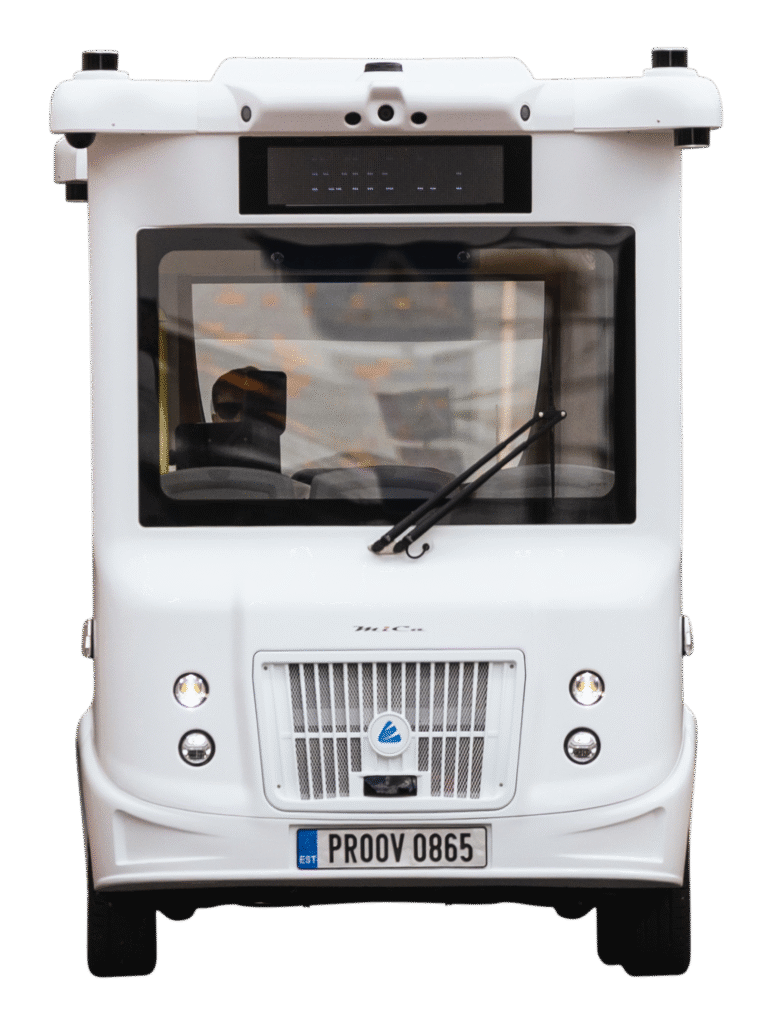Autonomous electric vehicles since 2018

The project in cooperation with the Tallinn University of Technology started in 2018 and was carried out to celebrate the 100th birthday of the university by producing the first prototype of a self-driving vehicle.
Following that, Auve Tech was founded to continue as a start-up, offering a full-scope service that enables the autonomous vehicles, and their integration into various environments and fleet management.
First prototype and pilot projects
Auve Tech’s prototype was created in 2018 and tested in various environments in different conditions. At the beginning of summer 2020, Auve Tech started testing its Iseauto shuttle on public streets in Estonia. The pilot route connected Ülemiste City – a privately-owned business campus – with Tallinn International Airport and a local shopping centre.
Auve Tech’s first project outside of Estonia was in Finland, followed soon by Lamia in Greece.

World’s firsts
In 2020, Auve Tech in cooperation with University of Tartu developed the world’s first hydrogen-powered autonomous vehicle.
Together with Skeleton Technologies, we made an autonomous shuttle drive on supercapacitors.

MiCa, a new generation
MiCa, the successor to the well-received Iseauto, was launched in 2022. It quickly became the market leader in Japan in addition to wide adoption in Europe, Middle East and the US.
In 2025, MiCa was significantly upgraded. Major improvements in autonomous capabilities are based on the newest version of Auve Stack 2.0 software featuring extensive use of machine learning and real-life data analysis. The brand-new capabilities include AI-based dynamic reaction to objects, overtaking vehicle detection, side detection and much more. Updated vehicle functional design draws from real-life operating experiences in Japan, Europe, USA and Middle East, improving significantly both vehicle manufacturing processes and end-result quality. MiCa 2.0 features both updated air conditioning and newest computer and software as standard.


